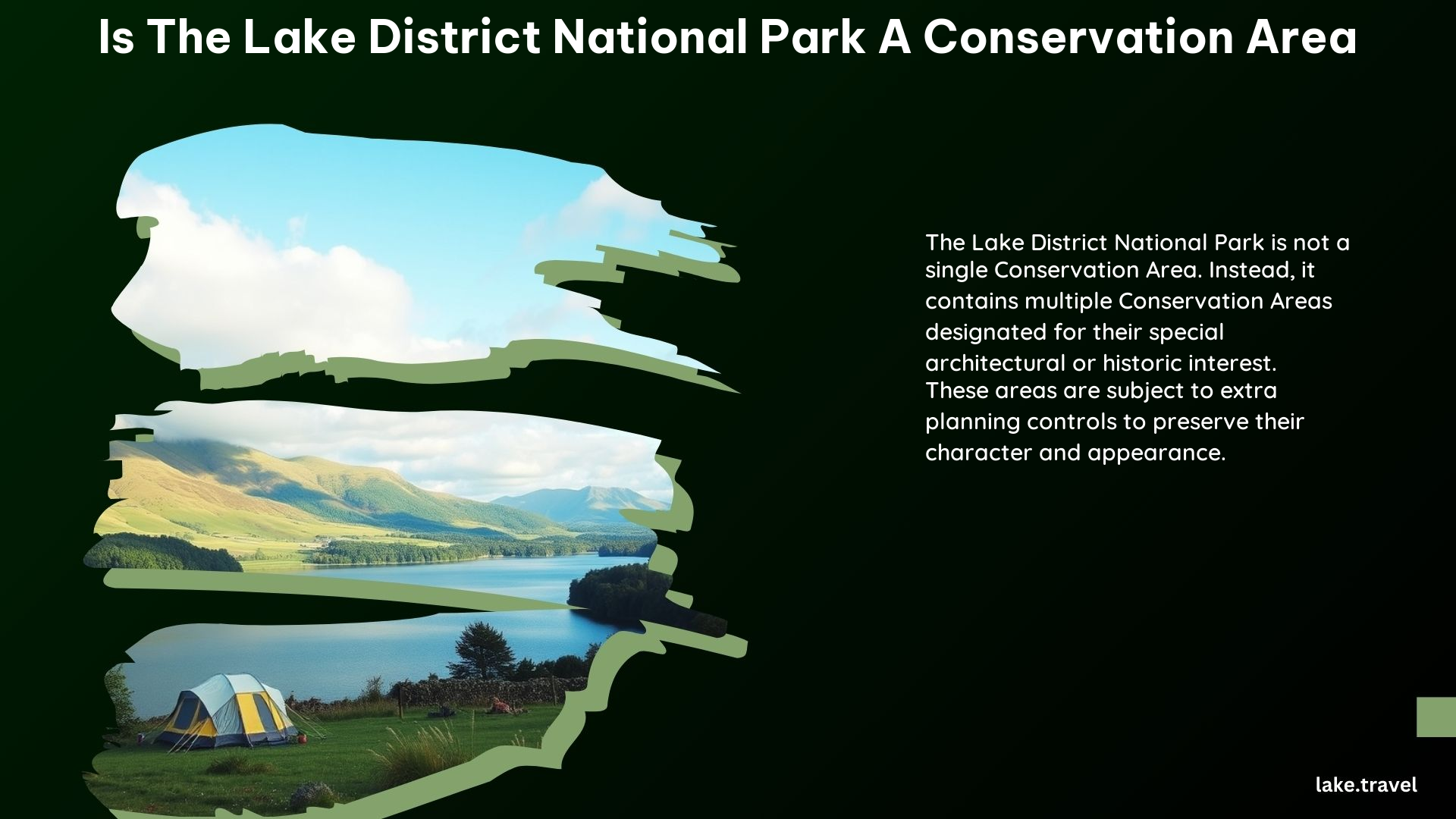The Lake District National Park is not a single conservation area, but rather a national park that contains multiple conservation areas within its boundaries. The park covers an area of 912 square miles (2,362 sq km) and includes numerous lakes, forests, and mountains, as well as over 400 villages and small towns.
What are the Conservation Areas within the Lake District National Park?

Conservation areas within the Lake District National Park are designated for their special architectural or historic interest. These areas are subject to additional planning controls to ensure that any new developments or alterations to properties complement the existing character of the area and do not detract from it. The Lake District National Park Authority is responsible for designating and managing these conservation areas, which involve promoting high standards of design and exercising controls over new development, demolition, and work to certain trees within the areas.
Some of the notable conservation areas within the Lake District National Park include:
-
Windermere: The town of Windermere is known for its historic buildings and picturesque landscapes. The conservation area in Windermere includes the town center and surrounding areas.
-
Ambleside: The town of Ambleside is another conservation area within the Lake District National Park. It is known for its well-preserved historic buildings and charming streets.
-
Grasmere: The village of Grasmere is a conservation area within the park, famous for its association with the poet William Wordsworth and its historic buildings.
-
Keswick: The town of Keswick is a conservation area that is known for its Georgian and Victorian architecture, as well as its proximity to the stunning natural landscapes of the Lake District.
-
Hawkshead: The village of Hawkshead is a conservation area that is known for its well-preserved historic buildings and narrow streets.
-
Coniston: The village of Coniston is a conservation area that is known for its association with the artist and writer John Ruskin, as well as its historic buildings and natural landscapes.
What are the Unique Features of the Conservation Areas in the Lake District National Park?

The conservation areas within the Lake District National Park are characterized by their unique architectural and historic features, as well as their natural landscapes. Some of the key features of these conservation areas include:
Historic Buildings
Many of the conservation areas within the Lake District National Park are known for their well-preserved historic buildings, ranging from Georgian and Victorian-era structures to traditional Lakeland cottages and farmhouses.
Picturesque Landscapes
The conservation areas are often situated in stunning natural landscapes, with lakes, mountains, and forests providing a beautiful backdrop to the historic buildings and villages.
Narrow Streets and Winding Paths
Many of the conservation areas feature narrow streets and winding paths that add to the charming and historic character of the areas.
Architectural Details
The historic buildings within the conservation areas often feature intricate architectural details, such as stone walls, slate roofs, and decorative features that contribute to the overall character of the areas.
Cultural Heritage
Many of the conservation areas within the Lake District National Park are associated with important cultural figures and events, such as the poet William Wordsworth and the artist John Ruskin.
How are the Conservation Areas Managed and Protected?
The Lake District National Park Authority is responsible for designating and managing the conservation areas within the park. This involves:
- Promoting high standards of design and architecture in new developments and alterations to existing buildings.
- Exercising controls over demolition, new development, and work to certain trees within the conservation areas.
- Providing guidance and advice to property owners and developers on appropriate design and materials for new developments and alterations.
- Monitoring and enforcing planning regulations within the conservation areas to ensure that the historic character and architectural integrity of the areas are preserved.
The conservation areas are also subject to additional planning controls, such as the requirement for planning permission for certain types of development and alterations to buildings. This helps to ensure that any new developments or changes to existing buildings complement the existing character of the conservation areas and do not detract from their historic and architectural significance.
Conclusion
In summary, while the Lake District National Park is not a single conservation area, it contains multiple conservation areas that are managed and protected by the Lake District National Park Authority to preserve their historic and architectural significance. These conservation areas are characterized by their unique features, such as historic buildings, picturesque landscapes, and cultural heritage, and are subject to additional planning controls to ensure that any new developments or alterations complement the existing character of the areas.
References:
- Lake District National Park. (n.d.). Conservation areas. Retrieved from https://www.lakedistrict.gov.uk/planning/conservationareas
- National Parks. (n.d.). Lake District National Park. Retrieved from https://national-parks.org/united-kingdom/lake-district
- Eden District Council. (n.d.). About conservation areas. Retrieved from https://www.eden.gov.uk/planning-and-building/conservation/conservation-areas/about-conservation-areas/
- South Lakeland District Council. (n.d.). Conservation areas. Retrieved from https://www.southlakeland.gov.uk/planning-and-building/conservation/conservation-areas/
